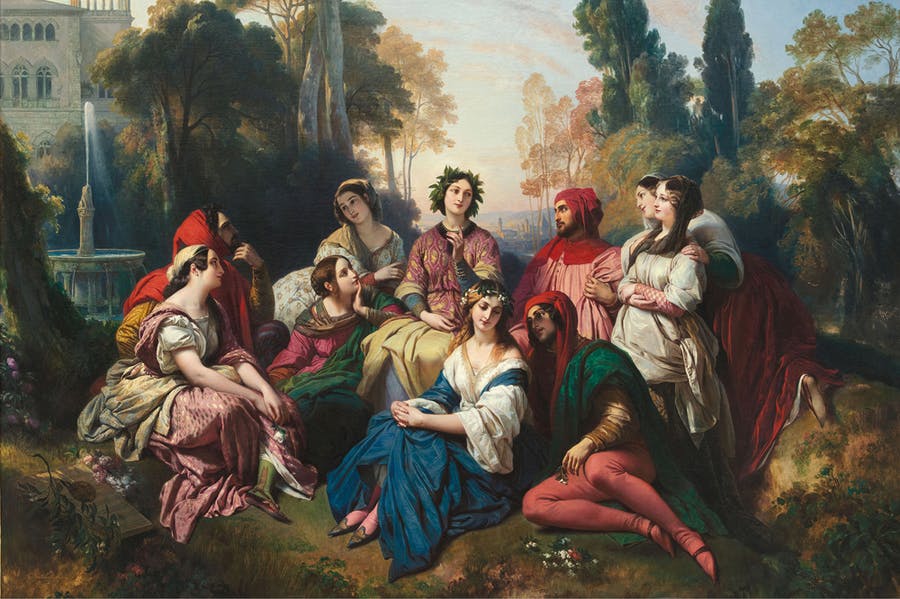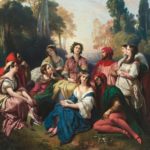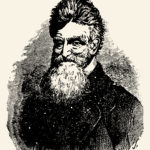The End through the ages. How we see everything we don't know.
More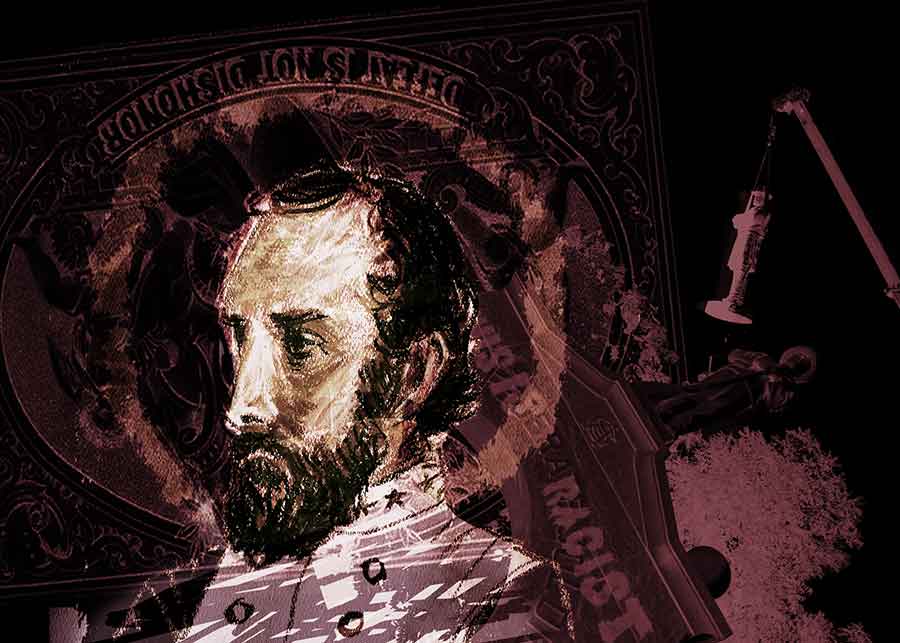
“Very Fine People on Both Sides”
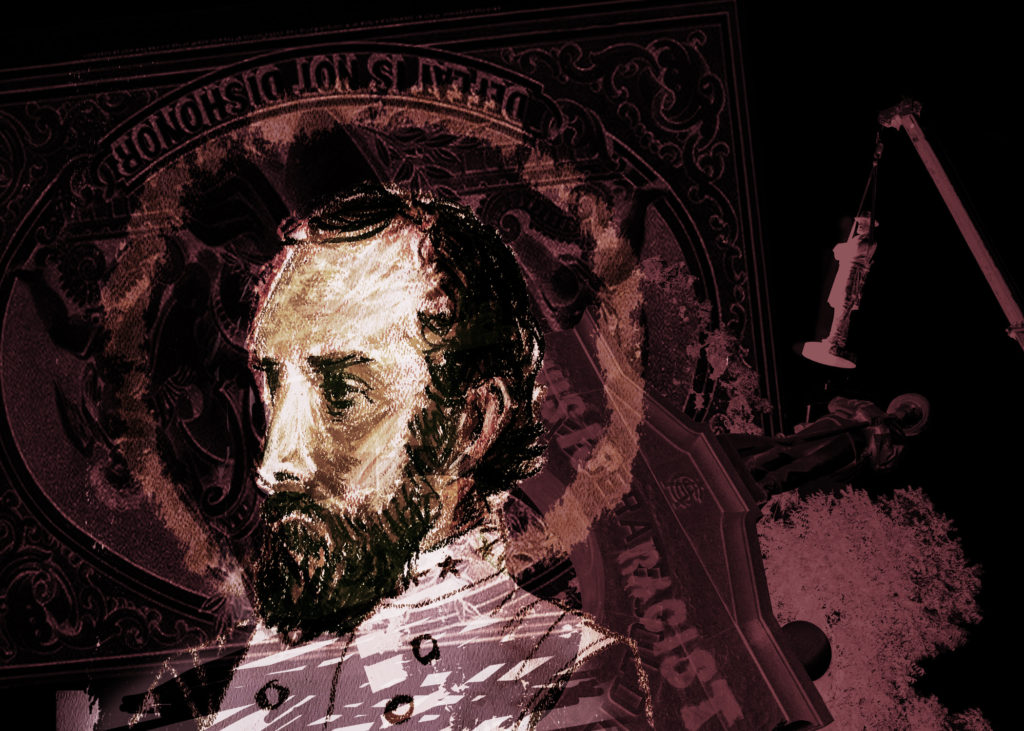
Like many Americans in the summer of 2017, I watched in horror as the miscellany of skinheads, Holocaust deniers, white supremacists, Neo-Nazis, Christian Identity gargoyles, and old-fashioned KKKers, took to the streets of Charlottesville, VA, ostensibly to protest the taking down of statues of Confederate generals, Robert E Lee and Stonewall Jackson, but perhaps more pointedly to attach their own brands to that of the Lost Cause, a brand with a black-suppression pedigree and proven staying power.
Swept up in the euphoria of the 2008 and 2012 elections, many out-of-the-closet lefties, including me, had wanted to believe that the advent of the Obama era signaled a prospering of tolerance and civility, a Camelotian pause. And despite the administration’s failure to sustain the promise of the tent-revival campaign rhetoric (Americans desire for drama is always more potent than its patience for the protracted and dull business of governance), at times the country felt as if it was being steered toward something like fulfillment of national aspirations. Does anyone recall Aretha Franklin singing “(You Make Me Feel Like) A Natural Woman” at the Kennedy Center Awards in 2015, with the Obamas in attendance? The performance is spellbinding. It’s impossible to watch a clip without feeling something historical is going on. Aretha tries the oldest showbiz move in the world, shedding her fur coat like a stripper and strutting onto center stage, all cleavage and heart-rendering provocation, as Obama, our coolest president since Calvin Coolidge, mouths the words, wiping tears from his eyes. The song itself, written by Carole King and Gerry Goffin, is a carnal/spiritual declaration, but Aretha’s performance, in the high secular church of American culture, contains multitudes: three hundred years of American race war, the Civil War, Reconstruction, Jim Crow, Selma and Montgomery and Memphis and Washington DC. It’s performance not politics, but her singing asserts personal transcendence over history, a triumph of decency over despair, in sync with the audience that includes the first brown-skinned President of the United States.
In Charlottesville, in August, 2017, it appeared, however, not all that much had changed since 2008. Indeed, things looked worse. Let’s pretend, for the moment, that the successor to Barack Obama wasn’t pandering when he commented re: Charlottesville that there were good and bad people on both sides, and let’s pretend for one more moment that he was making a metaethical point: that morality, essentially, is situational, and we all contain within us germs of good and evil. We’re all white supremacists and protestors of white supremacists. In this configuration, the original white power rally organizers, despite their chants and costumes, could easily have been something between: buffs interested in preserving real history from those who would rewrite it. And some bad hombres happened to join the group. Trump, strongman philosopher king, speaking words of wisdom, may have been refereeing the slim margin that saves humanity from devolving into madness and chaos, arbitrating the shades of good and evil that march to war in all humanity. Let’s pretend.
Not long after the Charlottesville riots, some friends and I were recapping what we’d watched on tv, including the post-scripted-press-conference Trumpian tantrum. Someone asked my thoughts about the Confederate statues in particular. I’d written a novel about a Confederate soldier/slave-owner, and a few academic works related to the war, so presumably had some insight to add.
I stammered something about the statues having different meanings for different people, but that didn’t help at all and we turned to another subject. At the time I wasn’t exactly sure what I meant, but in retrospect I suppose I’d meant to point out that history contains elements of distortion and myth, maybe it’s all distortion and myth, but one clings to what one has as a means of preserving cultural bonafides. In the South in particular, great- great- great-grandfathers loom large. Those uniformed boys of 1861, with their squirrel guns and daggers, and officers in feathered hats and prophet’s beards, are Shamanic spirits in the South. But then the old gods lost, didn’t they?—their war, their property, their slaves, their crops, their invulnerability, their cavalier plumes and sidearms. In the spring of 1865, soldiers were deserting the Army of Northern Virginia by the thousands, till the remnant that surrendered at Appomattox, by some accounts, consisted of a few more than 28,000 starvelings. In the wake of that loss, it devolved upon the decedents of the army remnants, and the deserters, to replenish, restore (redeemed is the word the Klan used) the South. Many summers when I was a kid, my parents, inveterate travelers, dragged me and my siblings across the country; large parts of our vacations were spent south of the Mason-Dixon, exploring nearly every Civil War battlefield between Virginia and Mississippi and Tennessee. Years later when I traveled there on my own, chatting it up with the natives, I was struck by Southern preoccupation, obsession, with a war fought a hundred and fifty years ago by, when it comes down to it, ancestral strangers. The Northeast, where I came from, registers the Civil War (or, in Southern formulation, War of Northern Aggression) as roughly equivalent, by socio-historical standards, to the Depression. It plays no part in cocktail party chatter, and surfaces less than you’d expect in political discourse. Perhaps the closest equivalent we have in the North is the American Revolution. But we don’t think much about Paul Revere, George Washington, or Saratoga and Ticonderoga either, at least the way Southerners go on about Jackson and Forrest, Chancellorsville and Manassas, with the explanatory fervor of a spurned lover.
As we drove through these Southern towns, the ubiquity of the monuments and paraphernalia of Confederate memorializing were a puzzle to me, even at a young age. What manner of country erects monuments to those who’d committed the lives of a quarter million men (roughly two percent of the entire population) to dismantle it? My father, who’d been a high school history teacher, in trying to come to terms with the question, would pause in thought in the front seat, smoking his pipe, but come short of an explanation, inevitably, just as I would years later.
But to those of us raised in the North, those remote Southern heroes possessed a visual panache that surpassed that of Northern equivalents: the optics, as they say, of the Southern officer class were simply superior. I remember lingering on pictures of the Confederate commanders in Civil War photo books. Lee, surpassingly handsome, a silver fox. Jeb Stewart, in feathers and red silk (a guess) and leather boots to his knees, looks like a parading, preening musketeer. Something you wouldn’t believe in a movie. John Mosby rides, poses in profile, vanishes into the Virginia countryside. The fantastically named Pierre Gustave Toutant-Beauregard sports a trimmed mustache and soul patch, feline eyes. There’s dash and élan in these fellows missing from the corporatish miens of Northern stalwarts like George Meade, U S Grant, Benjamin Butler. Even the woman-loving Fighting Joe Hooker looks like an overgrown Staples assistant manager on a Florida golf junket. Of Federal officers, only Tecumseh Sherman, of Federal commanders, stiff-haired, feral-skinned, possesses the compelling photogenicness of a warrior and boon nocturnal companion.
Besides, opposition to Northern hegemony was and is the romantic position to take. The North—the North is the mechanistic, the conforming, the company man. Come on. And the South? Moonlight rides through the forest, naps on joggling boards, courting under the tuliptree.… To be sure, all that hoop-skirted napping was problematized by the institution of slavery, but as long as slavery could be conveniently kept out of the discussion, the messaging of the aesthetic could prevail. Indeed, the war was never about slavery, was how it was explained to me a thousand times by well-meaning Southerners. The war was about the preservation of a way of life, the right to live unfettered from coercion (excluding, it goes without saying, those with darkly pigmented skin).
It’s inevitable (or so it seems to us now) that after Lee’s surrender in the spring of 1865, some new valediction would come to replace slavery defense as the Confederacy’s raison d’être. Thus, beginning in 1865 and continuing to the current president’s pronouncements about Charlottesville, Lost Causers claimed that the act of resistance, not what was being resisted, had been what they were gambling on all along. Their position reversed cause and effect, and claimed rebellion as fundamental, slavery auxiliary at best. For many, the Confederacy’s military defeat might even have ennobled and enshrined the idea of resistance. Poems like Allen Tate’s “Ode to the Confederate Dead” (1928) implicitly cloaked the cause in cultural legitimacy. Tate, a charter member of the Southern Agrarian literary movement of the 30s, gazes at Stonewall Jackson with classicalist veneration:
Stonewall, Stonewall, and the sunken fields of hemp,
Shiloh, Antietam, Malvern Hill, Bull Run.
Lost in that orient of the thick and fast
You will curse the setting sun.
Perhaps Jackson, Robert E Lee, weren’t traitors to their country, but the beau ideal: perversely, aptly, most representative Americans.
The Confederate memorials didn’t drop out of the sky. Sometimes, looking at a statue of some Confederate luminary, it’s easy to forget that someone had to conceive, someone had to obtain permits, someone had to commission the sculptures, someone had to sculpt them, someone had to arrange the ribbon cuttings and bbqs and speeches and parades. A brief history: Within a few years after Appomattox, a couple Confederate markers were put up on the old battlefields to mark positions where the regiments and brigades had fought. But the war had broken the South economically, and there was little left in the coffers for statues and elaborate reminders, and veterans had little appetite for refighting a lost war. But decades later things would change. As the region reestablished an economic and political foothold in the late decades of the 19th century, and the philosophical underpinning of the Lost Cause took root. Then between 1890 and 1920—as veterans died out and a new generation of Southerners tried to establish apartheid via Jim Crow laws, threats, lynchings—hundreds of commemorative monuments were erected in towns throughout the South, some funded directly by local and state governments, others by so-called Citizens Councils, Confederate veterans groups, Daughters of the Confederacy etc. One of the most prominent monuments—the Lee equestrian statue on Richmond’s Monument Ave, unveiled in 1890—was the brainchild of the Southern Historical Society, a Lost Cause organization spearheaded by ex-Confederate general and race-baiter, Jubal Early, the man who wrote, “Reason, common sense, true humanity to the black, as well as the safety of the white race, required that the inferior race should be kept in a state of subordination.” In the face of such rhetoric, what was a monument of Lee supposed to stand for? In the same 1890-1920 period, roughly 2500 black citizens were tortured and murdered by white citizens in the name of subordination and redemption: not just a restating, but an extension of the Confederacy’s agenda through extra-judicial means.
I worry my own reading of Southern literature and my experience in talking to people in the South isn’t sufficiently represented in what I’ve said so far. Doubtless some white Southerners despised slavery, wished the institution had been abolished much earlier than it was, and found the whole Cavalier, agrarian-mysticism a bunch of bunk. But post-Appomattox, many white Southerners also felt a genuine and understandable nostalgia for an antediluvian past, lamenting the war’s destruction of the tuliptrees and joggling board, and were revolted by the epidemic of lynching. Many people I talked to in my travels did share the sentiment of the Southern boys, for whom, as William Faulkner famously wrote, “not once but whenever he wants it, there is the instant when it’s still not yet two o’clock on that July afternoon in 1863, the brigades are in position behind the rail fence, the guns are laid and ready in the woods and the furled flags are already loosened to break out and Pickett himself with his long oiled ringlets and his hat in one hand probably and his sword in the other looking up the hill waiting for Longstreet to give the word and it’s all in the balance, it hasn’t happened yet….”
But it’s precarious business: acknowledging and refuting past sins.
In Faulkner’s Absalom, Absalom!, Quentin Compson, one of those Southern boys who can’t get Pickett’s ringlets out of their heads, lives in “a kind of vacuum filled with wraithlike and indomitable anger and pride and glory at and in happenings that occurred and ceased fifty years ago.” It’s 1910, and Quentin’s at Harvard in the peak year of monument building; beholden to the South’s glory and sin, he can’t find a way out of history, the “entailed birthright father and son and father and son of never forgiving General Sherman, so that forever more as long as your children produce children you wont be anything but a descendant of a long line of colonels killed in Pickett’s charge.…”
Quentin’s problem is one of living in the shadow of ancestors who insist on inserting themselves into the conversation. The past doesn’t liberate him. It suffocates him, but without it he’s cultureless, half-formed. It’s akin to the problem W E B Du Bois saw in Robert E Lee, and those who venerated him: “He followed Virginia not because he particularly loved slavery (although he certainly did not hate it), but because he did not have the moral courage to stand against his family and his clan.”
“’I dont hate it,’” Quentin says. “‘I dont hate it,’ he said. I dont hate it he thought, panting in the cold air, the iron New England dark: I dont. I dont! I dont hate it! I dont hate it!”
When I first encountered the monuments in front of the courthouses and in town squares, I regarded them, I suppose, without a shred of irony. In some way, they kickstarted my fascination with the war. My interest was prompted by the war’s look—meaning, the medium through which it presented itself (still black-and-white photos, semi-preserved battlefields, statues, souvenir hats and postcards). As a twentieth-century kid I imagined wandering around the nineteenth century like a tourist in a dream, passing through the field hospitals, sitting in on Lincoln’s cabinet meetings, witnessing the instant Longstreet gave the command for Pickett’s men to cross the field, toward the copse of trees, where a Yankee fusillade was going to annihilate them. It’s a way into history, and not irrelevant. One of my earliest vacation memories is of clamoring through someone’s backyard on the outskirts of Gettysburg with my father, in search of the marker that showed where my own great- great- great-grandfather’s regiment, the Seventh Maine, had been positioned in reserve, waiting for the breakthrough of Lee’s Army of Northern Virginia that never came. Years later, irony complicated things, as it does. I’d known as a kid, of course, that the Confederacy and slavery were inextricably entwined. My preference for Confederate glam didn’t reconcile with the ugliness of reality, and the subtext of secession; moreover, the fact that it didn’t was relevant to the ambient discussion going on around me. Constitutionally one could say that the Southern states had the right to secession (Massachusetts and other New England states, dissatisfied with Federal embargoes, threatened to abandon the Union during the 1812 war), but secession for South Carolina and the ten other states that followed its lead was solely a means of establishing a slave autocracy, free of Congressional balance that tipped heavily toward the North. Secession’s supporters—this particular secession—the venerated Robert E Lee included, were not just collateral supporters of a Constitutional bait-and-switch, but self-deluding, willing to sacrifice the deeper principle for the lesser (Lee said he considered slavery wrong, and acted otherwise). They knew enough to talk about slavery in muted tones, and made themselves out as the offended party, not unlike Trump professing alarm at hearing himself called a racist. Shocking!
Curiously, the white supremacists who came to Charlottesville to “defend history,” embracing the Confederate patriarchy as coequals in their race war, also happened to be exposing the internal incoherence of the patriarchy’s cause. The antebellum secessionists and postbellum Lost Causers operated in the closet, at least metaphorically; postbellum, their Mardi Gras disguises, their positions of power, their whiteness, their “respectability,” gave them a degree of moral deniability, however implausible. Even Jube Early said whites were helping blacks by subjugating them, and the white patriarchy was essentially benevolent, law-abiding, caretaking. But plausibility was never their concern. When murder becomes the default mean for the enforcement of norms—de facto law—then the enforcers of the norm become arbiters of their own morality. In the twenty-first century the white supremacists who rallied around the monuments in Charlottesville inadvertently came closer to actual history than they probably knew.
Cut to the video: Charlottesville, August, 2017, and the anti-semitic chants, the faces of contempt, the car careening through the crowd. Ostensibly, the white supremacists came to Charlottesville because they wanted “real” history to be preserved: a version of history with some ostensible decorum, in which the marble general on a horse stood for dignity, valor, a code of honor and all the rest. But, paradoxically, in the vile rhetoric, the Hitler salutes, the physical violence, they came closer to unveiling the reality of the meaning of the monuments than they’d intended, sustaining what poor Quentin Compson knew in 1910: that it all relied upon a beautiful lie.
You might be interested in
The End through the ages. How we see everything we don't know.
In 1859 John Brown attempted to incite a slave revolt in Harpers Ferry, Virginia. The events of those days became
In the spring of 2002, college art student Luke Helder set out to trace a Smiley Face pattern over the
John Murrell, prolific bandit on the old antebellum Natchez Trace, had a talent for masquerade.
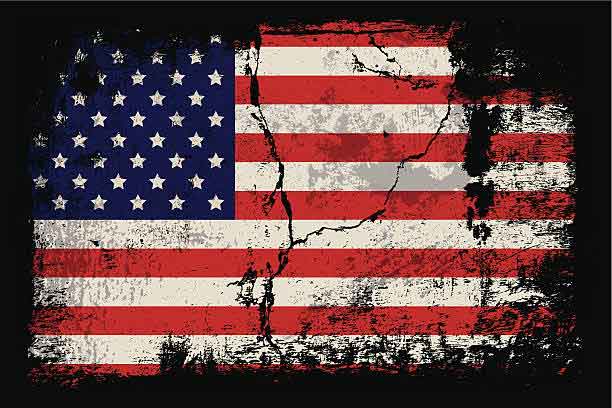
How did we become this anyway?

Does the zeitgeist churn up the villains it deserves, or do the villains create the zeitgeist?
In the mid to late Sixties, along a cultural fault line running somewhere between Saigon and Akron, Ohio, villainy had an uncanny way of mixing up with what was happening in the street. Let’s take, just for the fun of it, Batman: not the comic book or movie franchise, but the old tv series. The series ran from 66-68 and at its peak was broadcast into half the living rooms in America. The cartoony villains in the cartoony show rained terror upon the city of Gotham, and concocted Byzantine plots to foil and eviscerate the Caped Crusader—all the while adorned in outlandish multichrome costumes that seemed to align with the generation’s playacting style. It was good gaudy fun, and seemed somehow connected in parody to the self-doubt beneath the era’s optimism.
Villainy is often theater, of course, with an extra dash of personality disorder. Just think John Wilkes Booth with his Latin and his bloody dagger— But even before you get to Batman, the twentieth century had had its share of over-the-top cartoony villains—If you ignore the most concerted mass slaughters in the history of the world, Hitler and Stalin in their jerk-off fetish- fantasy uniforms are as close to clowns as you can get. But as the 70s took hold, villainy, so it would seem, shed its more garish extravagances, developed a more stolid fashion sense, favoring off-the-rack suits, regulation bureaucrat haircuts, looming five o’clock shadows. The era’s most notorious exemplars, Nixon, Haldeman, Ehrlichman, Mitchell et al, came into national consciousness as get-the-sale-at-any-cost used car hawkers of the American psyche. 50s guys you’d see at the end of driveways. And in a certain lights, they also appeared to be, like John Calhoun or Aaron Burr or Robert E Lee of earlier generations, moralists of a particularly American order, fallen idealists, possessing elements of tortured Shakespearian, Miltonian, self- flagellation. I picture Nixon/Richard III, with a single light on in the White House, whispering to his own soul, ear cupped for an answer that never quite comes. Perhaps there’s no more chiaroscuro image in the history of the US presidency than that of the 37th President rattling around the East Wing one May morning at 4 am, blasting Rachmaninoff, then venturing out to the Lincoln Memorial just as the sun ekes over the Potomac. On the Memorial’s steps, students eye the glowing tips of their cigarettes, protest signs on their shoulders, as Nixon steps out of the Presidential limo. “I know probably most of you think I’m an SOB,” says the lonesome man. “But I want you to know that I understand just how you feel.” Secret Service men, dark glasses in pockets, establish a permeable perimeter. The students shuffle forward, posing questions he’s in no position to answer. His Republican suit binds at the shoulders.
Whatever else, the zeitgeist of the early 70s did seem to conjure a Nixon-like character, a symbol of Americans’ war against their own identity, and a parody of anti-parody with a talent for incredulity… In November 72, Nixon was reelected by a landslide, but a few years later a pissant break-in operation, paranoid cover-up and popular resistance to the notion of an imperial presidency, had taken down the President. And one morning in August of 74 the only President in US history ever to resign strode across a chintzy White House red carpet, flashed defiant Vs for Victory on both hands, stepped into an old army helicopter, and was hastened away over the Lincoln Memorial. Richard III was flying coach.
I apologize for the lengthy preamble. Bear with me. Sometimes an oblique approach gains higher ground. For a while now I’ve been wanting to expand upon a subjective perception I’ve had viz the current sitting president, but thus far what I’ve wanted to say has remained inchoate to me. But encoded in its inchoate quality, I’ve been hoping, is a key to getting at the same essentiality that can be attributed to Nixon. On January 20, 2017, the movers showed up and dumped Trump’s gilded toilet, fake Renoir and adult kids off on the White House lawn, and since that day habitual contextualizers, including me, have been hard pressed to contextualize the President’s place in the zeitgeist. Like penitents at a shrine we recite over-familiar flaws (bigotry, sexual brutality, narcissism, mental instability and/or incompetence, demagoguery, collusion, personal corruption etc etc etc) and hope for, if not necessarily expect, miracles of understanding to ensue. Our need for outrage is satiated temporarily; but gains in personal satisfaction come at the expense of public meaning. Of course there have been outpourings of public resistance to the new administration—protests, court injunctions, a million daily snickers, impotent impeachment proceedings—but as observers of Trumpian villainy we sometimes lose context in dense thickets of specificity. The more obsessively we tally evidence of his gross malfeasance, the farther away from its essentiality we seem to feel, or at least I do. Nixon’s sins seemed tied to a flawed character that could make one of the great protagonists of the twentieth century; Trump’s wickedness exists outside accountability, an ambient one-dimensional corruption that stymies investigation, criminal and psychological.
In affaires politiques, I generally default to the grand overview that many former history majors like me tend to take. According to the meta-narrative, grandees of politics from Pericles to Nixon reveal their ideas, flaws, ambitions, exert influence—and are thence mulched into the historical soil. Over time the dead grandees’ status may rise or fall, some new iteration of an old grandee may appear, like a straggly weed from a spared seed, and we will believe, comfortably, dutifully, that the present is to be construed out of the past’s inhering logic. But for many liberal, ruminant political bystanders, the 2016 election results made us wonder what the hell history’s logic had prepared us for. Trump was an outlier in the comfortable story about the Republic many of us had always told ourselves. He was mentioned in polite company only out of necessity, dismissed with a small cough into a hand. Every word the man spoke elicited cellular level revulsion in many folks who had accepted that the American government ran, with some few exceptions, on a bumpy but fairly predictable course.
Our verdict had been political, of course, in the the word’s most basic sense. But more than political the verdict was, arguably, aesthetic. I mean, let’s face it, on Batman, it was the Joker’s fashion sense, his self-aware anarchicness, that separated his villainy from that of run-of-the-mill larcenists and embezzlers. It elevated him to a special order of bad guy. Trump’s own vain costume (the crotch-length neckties, rehearsed scowls, tangerine makeup, Marie Antoinette combover coiffeur), on the other hand, possessed none of a cartoon villain’s self-satire and joyful mayhem. “Trump’s symmetrical but overlong tie,” says a Stanford scholar, “stands out like a rehearsed macho boast, crass and overcompensating.” It’s a jokeless joyless style, a bragging stuck-out tongue of a tie, incapable of processing irony, and void of darker dimensions of Nixonian tribulation—not only bad but tedious—not only odious but malign—an existential threat to the commonsensical decency Americans want to believe characterizes their finest impulses.
“You can always count on a murderer for a fancy prose style,” says Humbert Humbert in Lolita. Trump has no prose style (he’s functionally illiterate), and Nabokov could wield his own ornate prose style of course, but here’s the point: how often bad taste does coincide with bad faith. Nazis built grotesque monuments to themselves, drug lords and Wall Street novitiates adorn their wrists with watches the size of Volvos. Trump would gild oxygen if he could. Let’s say, as Heraclitus does, that Ethos anthropos daimon. Character is fate. Fate is style. Style is matter. Here is Trump, risen to the highest office of the land, interpreting his triumph as vindication of the venal know-nothing style. He’s absorbed into his corpuscles the knowledge mob bosses have.
That corrupt character, the bragging tie, can lead to a decent living too.
At the center of Trump’s I-know-you-are-but-what-am-I-ism is a question of identity. What am I? Who am I? Am I nothing? Negation presented as a question. A plea. An admission. For some writers, the presentation of this vacuity as affirmative good could make premium raw material. Pundits type as fast as he manufactures fresh outrage. Late-night comedians feast on the carcass. But from a dramatist’s perspective, what matter can be made of such character? What fresh insight would a reader gain from a novel about a soulless protagonist? A few possible angles of approach suggest themselves. There’s the political, of course. Plausibly, Trump could be sketched as the logical extension of Joe McCarthy and Roy Cohn (Trump’s mentor, and McCarthy counsel/acolyte), a modern instance of demagogic tradition in American history. But Tail Gunner Joe was a maniacal prosecutor of chimeras, a perverse idealist. Too busy trying to fill the void, one guesses Trump couldn’t care less about Constitutions, governments, or chimeras for that matter. Still, the novelist or screenwriter must occupy her pages with something to engage the reader’s sympathies. The Empty Man, the feeblest of Strong Men, must somehow be relatable.
Once in passing I’d imagined writing a novel about a Trump-like huckster. I went so far as to work out the peripheral characters, how the plot would play out against an arc of the American political scene. Maybe my Trump could have a moment like Nixon’s, rattling around the East Wing at odd hours, wading into the crowd at the Lincoln Memorial, trying to plumb the depths of a quiescent soul. A cadre of vile yay-sayers would round out the dramatis personae. Kelly Ann, Javanka, Paul, Vlad, Sarah, the Mercers, the Kochs, the Steves, Spencer, Ann, Roger…. Uniform in their insatiable lust for power, these characters exude multitudinous villainy. They’d circle the Oval Office, offering flattery, procuring reality tv celebrities and porn stars for the President, helping to undo the achievements of his arch-nemesis, the coffee-colored foreign-born ex-. A twisted little lizard, Stephen M—Iago, Robespierre, Uriah Heep—so close to power he tastes it like bile in the back of his throat, writhes, kisses the ring. Javanka corners Bannon in a West Wing bathroom, threatening to kill his dog if he doesn’t surrender his FBI clearance and wipe the President’s cell number from his phone before the toilet finishes flushing. Ann, throwing back her patrician mane, chortling in self-adoration, slips poison into Andrew Sullivan’s breakfast cereal. Kelly Ann—a Jersey mob wife trying to return last year’s sweater at Nordstroms—pushes past the clerk and assistant manager, waving the old sweater like a flag. All doing their own jazz riffing on any misplayed presidential bleat. But the exercise of writing such a book, while possibly diverting, seemed entirely misbegotten, you might as well try writing a novel about a vacuum.
Demoralized, unsure where to start, I set the project aside.
What claim hath any villain to the zeitgeist anyhow? Historically, Americans’ taste in villains has run from charismatic rebels who cruised the country lanes and shot up the road signs (Bonnie and Clyde, the Joker), to antinomian demagogues who would tear down the temples (Daniel Shays, Ann Hutchinson, Father Coughlin…). Engendered in the country’s Jeffersonian Revolutionary spirit has always been a fetish for destruction as a means of renewal—the restoration of an ancient white-pillared America that never really did exist. In this light, the Trumpian moment is nothing new. John Calhoun, William Jennings Bryan, Father Coughlin, Sarah Palin were progenitors. Indeed, one is sure Trump hardly is aware of historical precedent (I’d bet his bogus fortune he’s never even heard of William Jennings Bryan). An accidental populist, he’s an unwitting, vacuous vehicle for populism’s most toxic Coughlin-, Palineque strains. To my mind, the pressing question, however, is whether casual brutality endures as the defining fashion of the zeitgeist, warping our national psyche, or shall it be buried along with the corpses of McCarthy and Coughlin and Trump, remembered as a fleeting deviation from commonsensical decency?
Let’s not attribute to pathologies what might be attributed to chance. Maybe in fact we’re too quick to accord Trump the ambient influence he believes his birthright. Sure, Senate and House Republicans who should know better have made an unholy alliance with him, furthering their own agendas, becoming accomplices. But as a demonstrably unpopular populist (losing the popular election by 2.9 million votes), he was churned up for any number of reasons (identity politics, vagaries of the electoral college, crooked gerrymandering…) that disqualify him as the people’s legitimate representative, and, lest we forget, a change in three or four counties countrywide would have flipped the electoral results too. Thesis creates antithesis. The rickety old democracy, we like to think, exerts its old normative self. The king rides naked through the streets, proclaiming his preeminence. But Executive Orders are overturned. Paris accords remain in effect. Little Stephen Miller, hissing on tv, is escorted from the building, kicked to the pavement. The press returns fire. Investigations grind on. Senators vote on evidence. Impeachment prevails. Alec Baldwin hilariously upends blow hardism. The crotch-level tie is scorned. Crassness and villainy may hold sway for now, but a counter movement pushes back, an exuberant and inspired opposition engaged in democracy. The Republic, in greater jeopardy than any time since Nixon’s, or perhaps since Reconstruction, struggles to re-right itself, and, if history can be regarded, the Republic may survive the threat, and may yet endure for another few hundred years. Let us pray.
Zeitgeists are not kind to their villains.
You might be interested in
The End through the ages. How we see everything we don't know.
Charles Manson and his followers settled in at the Spahn Ranch, in Los Angeles County, in the summer of 1968.
In 1859 John Brown attempted to incite a slave revolt in Harpers Ferry, Virginia. The events of those days became
In the spring of 2002, college art student Luke Helder set out to trace a Smiley Face pattern over the

